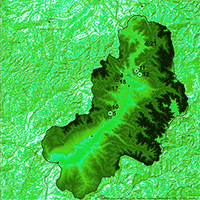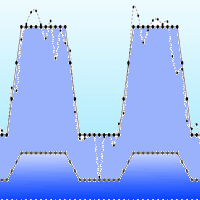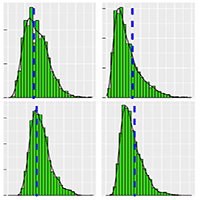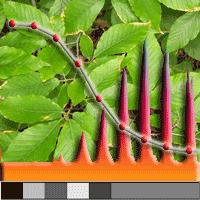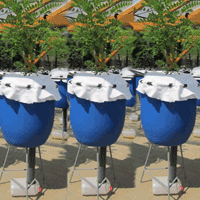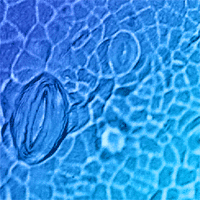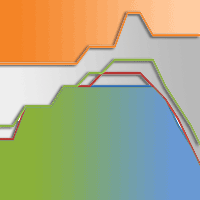
Groundwater uptake of forest and agricultural land covers in regions of recharge and discharge
Norbert Móricz (1) , Tibor Tóth (2), Kitti Balog (2), András Szabó (1), Ervin Rasztovits (1), Zoltán Gribovszki (3)
iForest - Biogeosciences and Forestry, Volume 9, Issue 5, Pages 696-701 (2016)
doi: https://doi.org/10.3832/ifor1864-009
Published: May 17, 2016 - Copyright © 2016 SISEF
Research Articles
Abstract
Groundwater uptake of vegetation in discharge regions is known to play an important role, e.g., in the Hungarian Great Plain. Nevertheless, only little detailed monitoring of water table fluctuations and groundwater uptake (ETgw) were reported under varying hydrologic conditions and vegetation cover. In this study, results of water table monitoring under forest plantations and adjacent corn plots in discharge and recharge regions were analyzed to gain better understanding of the relation of vegetation cover to groundwater uptake. A poplar (Populus tremula) plantation and adjacent corn field plot were surveyed in a local discharge area, while a black locust (Robinia pseudoacacia) plantation and adjacent corn field plot were analyzed in a recharge area. The water table under the poplar plantation displayed a night-time recovery in the discharge region, indicating significant groundwater supply. In this case an empirical version of the water table fluctuation method was used for calculating the ETgw that included the groundwater supply. The mean ETgw of the poplar plantation was 3.6 mm day-1, whereas no water table fluctuation was observed at the nearby corn plot. Naturally, the root system of the poplar was able to tap the groundwater in depths of 3.0-3.3 m while the shallower roots of the corn did not reach the groundwater reservoir in depths of 2.7-2.8 m. In the recharge zone the water table under the black locust plantation showed step-like changes referring to the lack of groundwater supply. The mean ETgw was 0.7 mm day-1 (groundwater depths of 3.0-3.2 m) and similarly no ETgw was detected at the adjacent corn plot with groundwater depths between 3.2 and 3.4 m. The low ETgw of the young black locust plantation was due to the lack of groundwater supply in recharge area, but also the shallow root system might have played a role. Our results suggest that considerations should be given to local estimations of ETgw from water table measurements that could assist to better understanding of groundwater use of varying vegetation types in recharge and discharge zones.
Keywords
Groundwater, Evapotranspiration, Poplar, Black Locust, Recharge and Discharge Area
Authors’ Info
Authors’ address
András Szabó
Ervin Rasztovits
Forest Research Institute, National Agricultural Research and Innovation Centre, Sárvár (Hungary)
Kitti Balog
Institute for Soil Sciences and Agricultural Chemistry, Centre for Agricultural Research, Hungarian Academy of Sciences, Budapest (Humgary)
Institute of Geomatics and Civil Engineering, University of West Hungary, Sopron (Hungary)
Corresponding author
Paper Info
Citation
Móricz N, Tóth T, Balog K, Szabó A, Rasztovits E, Gribovszki Z (2016). Groundwater uptake of forest and agricultural land covers in regions of recharge and discharge. iForest 9: 696-701. - doi: 10.3832/ifor1864-009
Academic Editor
Tamir Klein
Paper history
Received: Sep 08, 2015
Accepted: Jan 19, 2016
First online: May 17, 2016
Publication Date: Oct 13, 2016
Publication Time: 3.97 months
Copyright Information
© SISEF - The Italian Society of Silviculture and Forest Ecology 2016
Open Access
This article is distributed under the terms of the Creative Commons Attribution-Non Commercial 4.0 International (https://creativecommons.org/licenses/by-nc/4.0/), which permits unrestricted use, distribution, and reproduction in any medium, provided you give appropriate credit to the original author(s) and the source, provide a link to the Creative Commons license, and indicate if changes were made.
Web Metrics
Breakdown by View Type
Article Usage
Total Article Views: 49883
(from publication date up to now)
Breakdown by View Type
HTML Page Views: 41750
Abstract Page Views: 2867
PDF Downloads: 4036
Citation/Reference Downloads: 36
XML Downloads: 1194
Web Metrics
Days since publication: 3516
Overall contacts: 49883
Avg. contacts per week: 99.31
Citation Metrics
Article Citations
Article citations are based on data periodically collected from the Clarivate Web of Science web site
(last update: Mar 2025)
Total number of cites (since 2016): 4
Average cites per year: 0.40
Publication Metrics
by Dimensions ©
Articles citing this article
List of the papers citing this article based on CrossRef Cited-by.
References
Crop evapotranspiration - Guidelines for computing crop water requirements. FAO irrigation and drainage paper 56, FAO, Rome, Italy, pp. 300.
Gscholar
A global overview of drought and heat-induced tree mortality reveals emerging climate change risks for forests. Forest Ecology and Management 259: 660-684.
CrossRef | Gscholar
Current afforestation practice and expected trends on family farms in West Hungary. Journal of Central European Agriculture 5: 297-302.
Gscholar
Phases of blown-sand movements in the North-East part of the Great Hungarian Plain. Acta geographica ac geologica et meteorologica, Debrecina 20: 5-33.
Gscholar
Regional vegetation die-off in response to global-change-type drought. Proceedings of the National Academy of Sciences USA 102: 15144-15148.
CrossRef | Gscholar
A field investigation of phreatophyte-induced fluctuations in the water table. Water Resources Research 43: W02404.
Gscholar
A review of models and micrometeorological methods used to estimate wetland evapotranspiration, Hydrological Processes 18 (11): 2071-2101.
Gscholar
Az erdovagyon bovítése a mezogazdaságilag gazdaságosan nem hasznosított földterületek beerdosítésével [Forest cover expansion by afforestration of economically non rentable agricultural lands]. In: “Erdo-fa hasznosítás Magyarországon” (Molnár S ed). University of West Hungary, Sopron, Hungary, pp. 130-136. [in Hungarian]
Gscholar
Will dry events occur more often in Hungary in the future? Environmental Research Letters 2: 034006.
Gscholar
Watering the forest for the trees: an emerging priority for managing water in forest landscapes Frontiers in Ecology and the Environment 11: 314-321.
Gscholar
Comparison of groundwater uptake and salt dynamics of an oak forest and of a pasture on the Hungarian Great Plain. Acta Silvatica et Lignaria Hungarica 10 (1): 103-114.
Gscholar
Water footprint manual: state of the art 2009. Water Footprint Network, Enschede, Netherlands, pp. 206.
Gscholar
A fatenyészet és az altalajvíz, különös tekintettel a nagyalföldi viszonyokra [Forest and groundwater connections in Hungarian Great Plain]. Erdészeti Kísérletek 42: 1-107. [in Hungarian]
Gscholar
Morphological characteristic of the Robinia root system on different sites of the Great Hungarian Plain. In: “Methods of Productivity Studies in Root Systems and Rhizosphere Organisms 68” (Russian Academy of Sciences ed). International Symposium, Saint Petersburg, Russia, pp. 89-96.
Gscholar
Estimation of groundwater consumption by phreatophytes using diurnal water table fluctuations: a saturated-unsaturated flow assessment. Water Resources Research 41: W07030.
Gscholar
Alföldfásítás II [Afforestration in Hungarian Great Plain II]. Akadémiai Kiadó. Budapest, pp. 512. [in Hungarian]
Gscholar
Síkvidéki erdok hatása a vízháztartásra [Effect of lowland forest on water balance]. Hidrológiai Közlöny 82: 319-324. [in Hungarian]
Gscholar
Forests in a water limited world under climate change. Environmental Research Letters 9: 085001.
Gscholar
Groundwater studies in the Assiniboine River drainage basin-part II: hydrologic characteristics of phreatophytic vegetation in south-central Saskatchewan. Bulletin of Geological Survey of Canada 139: 65.
Gscholar
Water balance study of a groundwater-dependent oak forest. Acta Silvatica & Lignaria Hungarica 6: 49-66.
Gscholar
Extinction depth and evapotranspiration from ground water under selected land covers. Ground Water 45 (3): 329- 338.
Gscholar
Method of estimating groundwater supplies based on discharge by plants and evaporation from soil - results of investigation in Escalante Valley, Utah, US. Geological Survey, Water Supply Paper 659-A, pp. 1-105.
Gscholar

